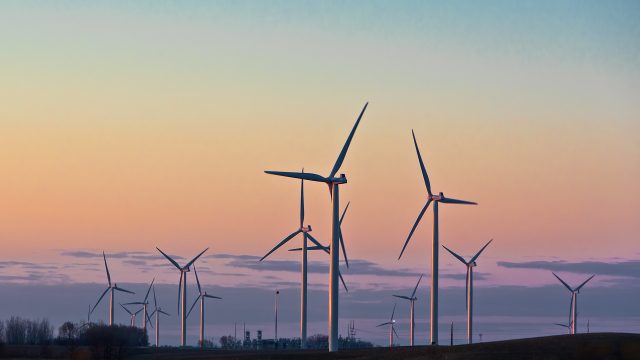Jason Stverak: Let The Wind Production Tax Credit Expire

The winds of change roared through the American political system this November, but clearly they didn’t blow hard enough to break congressional love for wasteful subsidies like the wind energy production tax credit.
In an overwhelming vote of 378 to 46, the House of Representatives extended the credit retroactively for 2014, potentially burdening American taxpayers with an extra $42 billion subsidy for an industry that has no feasible plan to become financially sustainable.
Back in 1992, Congress passed the Production Tax Credit as a temporary measure, assuming 20 years to be sufficient for wind energy to get on its feet. But during the last two decades, large corporations like Berkshire Hathaway, General Electric and others have taken billions in taxpayer funding with no plan to ever turn a real, unsubsidized profit. Warren Buffett even admitted that he never would have invested a dime into wind energy without the lucrative subsidies.
Not only has the credit failed to get the industry to self-sufficiency, it serves as a costly duplication of other government efforts. Many states actually require energy companies to invest in renewable energy already. The tax credit simply pays the company for what it would have done regardless.
Typically, heavily subsidized industries have very little incentive to innovate and make their products more efficient or profitable. Over 15 years into the Production Tax Credit, wind turbines failed to reach more than one-third of their total energy production capacity. Even worse, in 2009 and 2010, the capacity dipped to a paltry 28 percent.
Most non-fossil fuel sources tend to operate above 65 percent.
Simply put, the Production Tax Credit encouraged construction of turbines in areas without sufficient wind to run them while failing to improve capacity to an acceptable efficiency level.
It would be unfair to say that the wind energy industry has entirely failed to innovate, though. Future wind turbines may use ultra-light aluminum in their blades, hoping that the newer substance can produce power more efficiently.
However, as Tim Carney notes, “dissolving the alumina to get pure aluminum — inherently gives off carbon dioxide and the far more potent greenhouse gasses hexafluoroethane and tetrafluoromethane.” Aluminum also requires a hefty amount of resources to produce compared to many other substances.
As turbines use more aluminum, future Production Tax Credit dollars will increasingly pay for materials that put off more of the same gases that use of wind turbines is supposed to reduce.
Wind energy can certainly exist, expand, and even thrive on a limited basis in the United States. The Production Tax Credit, however, has done nothing to help it and might have even hindered its natural development. For the sake of fiscal sanity, as well as the industry’s future, drop the credit.




